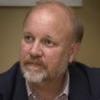I've
written about the idea that technology is allowing our meetings to spill over their borders, and become a kind of node along a line or path of collaboration around a particular idea or business need. Enterprises increasingly are able to embed video and text transcripts of meetings, whether regularly scheduled or ad hoc, within the collaboration application that also serves as the platform for all the work that team members do together.
That’s one way to make meetings more useful, by making their content more accessible and minable both by participants and non-participant team members alike. Another way to make meetings more useful is by making participation more natural—that is, making the meeting easier to find and join, and even making the “camera work” itself easier to watch so you can gain the visual benefit that we’re supposed to get from adding video to a meeting.
We got a glimpse of some emerging improvements in this area last fall at
Zoomtopia, the annual event put on by Zoom Video Communications, the cloud-based video service provider that’s become one of the hottest tech companies in Silicon Valley.
The company offers several Zoom Rooms features that aim to make meetings easier to join and engage with. Highlights include:
- A scheduling display “find a room” feature that shows users a map of nearby rooms available for ad hoc bookings
- Three camera presets that allow for audio-based speaker tracking via voice pickup from supported microphones
- A profile update that lets administrators input audio-visual and display settings so in-room meeting participants can select which mode – lecture or panel, for example – is best for their use case
We’ve all sat through too many videoconferences where the people on the other end look like they’re in a different zip code from the camera (a zip code where it’s currently dusk, too); you can barely recognize colleagues you know well. So vendors like Zoom are equipping video systems with the physical means (i.e., multiple cameras) and controls to function as if there were a live operator behind the camera and control console—so your focus is directed as it would be if you were sitting in the room with those other people.
And, of course, more sophisticated room scheduling and finding systems help attendees get access to more video-enabled meetings in the first place. Not only do these systems help people schedule and hold meetings, but they’re also critical to getting the most out of your meeting room deployments, ensuring that rooms don’t sit empty if a meeting gets canceled at the last minute. Along these lines, another new feature from Zoom uses AI face detection to give administrators a count of the number of people using a room at any given time. That’s another good way to optimize your planning for meeting room capacity, and these face-detection systems are, as the name suggests, different from facial recognition: The aim isn’t to track who goes to what meetings, but just to get an anonymized count of room usage.
Continual enhancements to videoconferencing will help these systems gain even more utility and thus greater adoption, while hopefully improving the quality of the collaboration. Just as it’s mentally exhausting to take part in an audioconference call where you can’t understand people or tell speakers’ voices apart, with a videoconference, you need, well, good video in order to achieve the goal of more natural collaboration with remote colleagues.



